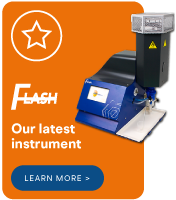Who Invented The Flame Photometer
- The BWB Team
- Feb 20, 2019
- 3 min read
Updated: Mar 8, 2022
From 1500 to modern day, a brief history of the flame photometer

In our previous blog posts we introduced the concept of how the excitation of electrons results in the emission of a photon; however, it took a long time for this concept to take shape. Prior to the knowledge of photons and electrons a German metallurgist named Georgius Agricola commented on “the colour of fumes” from different types of ores, and how to identify them in the introduction of a paper in 1556. This was a qualitative analysis of the colour of a flame to determine what was contained within the ore.
This concept however, was then not touched upon for two centuries until Isaac Newton began to investigate light and its properties in early 1700. Then not for a further century when the beginning of investigations into spectral lines of the rays of light from the sun was investigated in the 1800s.
Hershal studied the emissions of an alcohol lamp in 1823, which is the first example of a lamp being studied for its light emission. We now have had the two major components of a flame photometer studied yet, there were 3 centuries between them and no link had been formed. Soon after however, would result in an explosion of activity between the flame and an element.
Foucalt was the first to make the link between Sodium emissions on a lamp and the Sodium emissions from the sun. However, it would be Kirchoff who would make the major breakthrough in the topic stating that “the relation between the powers of emission and the powers of absorption for rays of the same wavelength is constant for all bodies at the same temperature."
Kirchoff and Bunsen (Inventor of the Bunsen burner) collaborated together and are now credited with the founding of analytical spectrometry, the discovery of indium gallium and thallium are credited to chemists of the time via this technique of flame excitation.
In 1873, Champion, Pellet, and Grenier TM produced an instrument that was suggested three years earlier by Janssen to quantize the analysis for sodium. They used a spectroscope, with visual photometry, to measure sodium emission. Two flames were used, one for the unknown, the other for a series of standards. The spectra were displaced so they could be observed simultaneously. The authors reported an accuracy of two to five percent for sodium in plant ash. Their system was the first instrument specifically designed and constructed to make possible quantitative data using flame excitation. Apparently little attention was paid to the method used to introduce the sample into the flame until 1877 when Gouy LG demonstrated conclusively that radiation intensity from a flame was a function of flame size and the quantity of substance introduced into the flame. To control those factors Gouy designed a pneumatic atomizer to inject a controlled amount of sample into the flame. The result was increased precision and accuracy of analysis.
In 1873, Champion, Pellet, and Grenier developed an instrument that analysed the content of sodium in plant ash samples to a within 5%, which would be the “invention” of the flame photometer as we see it today.
Now BWB Technologies are on the cutting edge of flame photometers in the modern world and pride ourselves in trying to further push the boundaries of what is possible with them as well as streamlining current processes and reducing operation burden.






